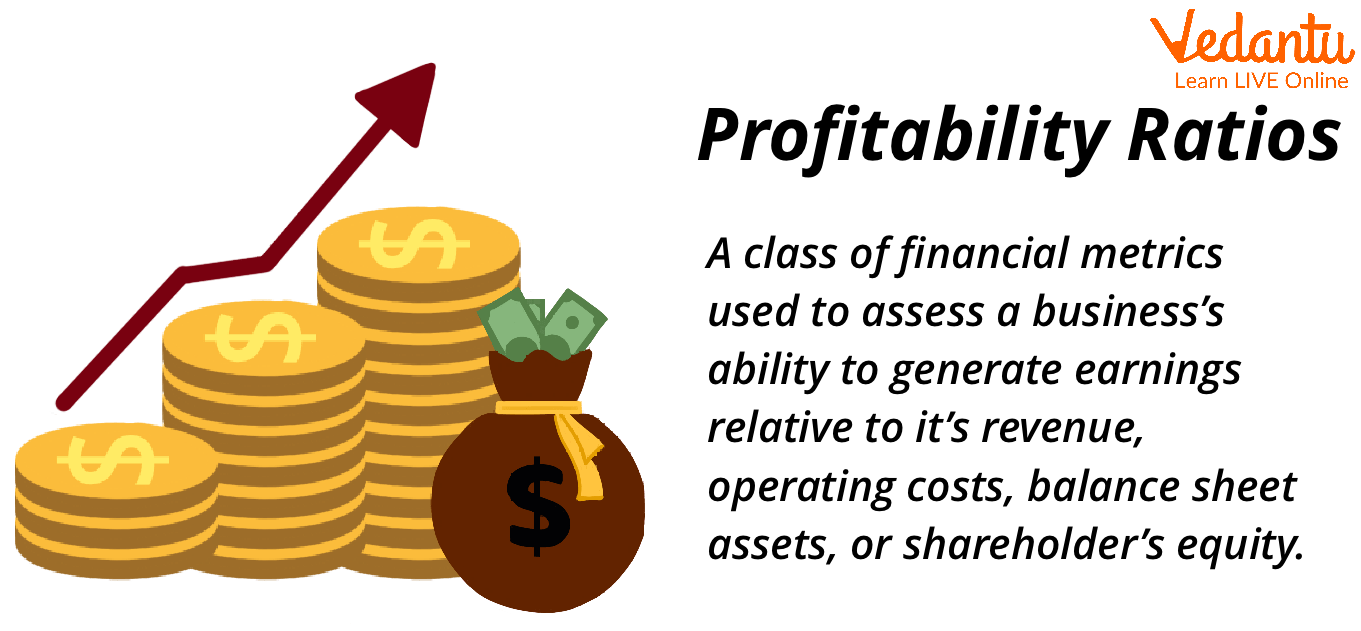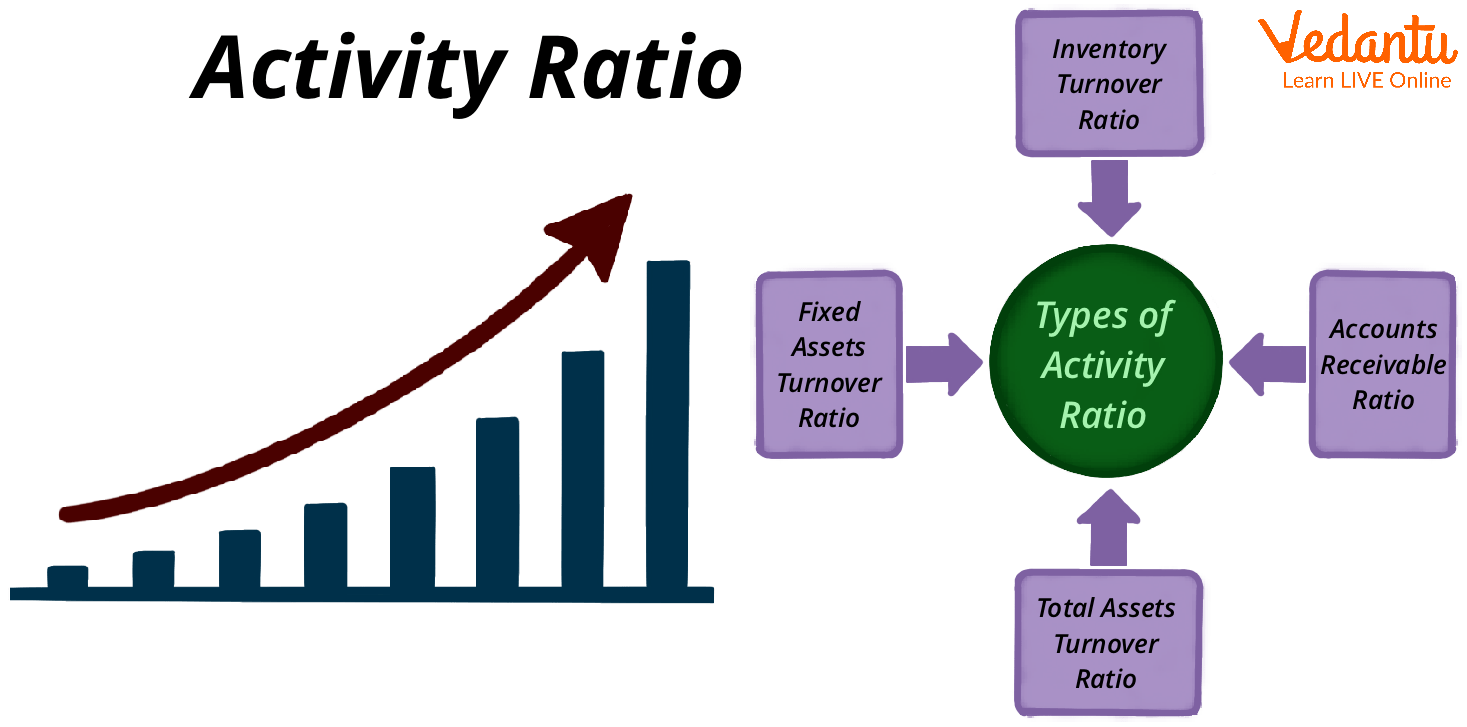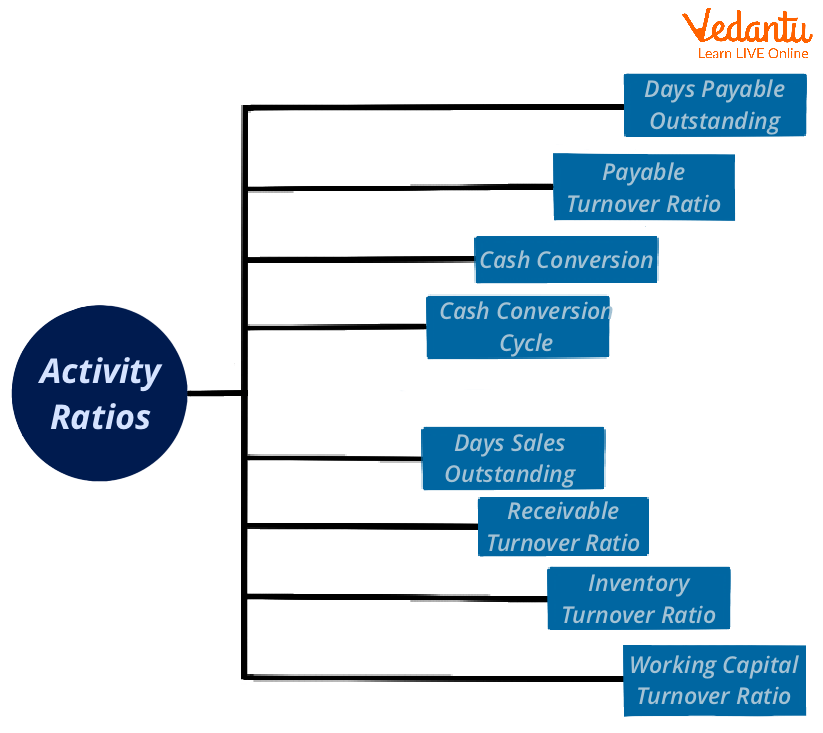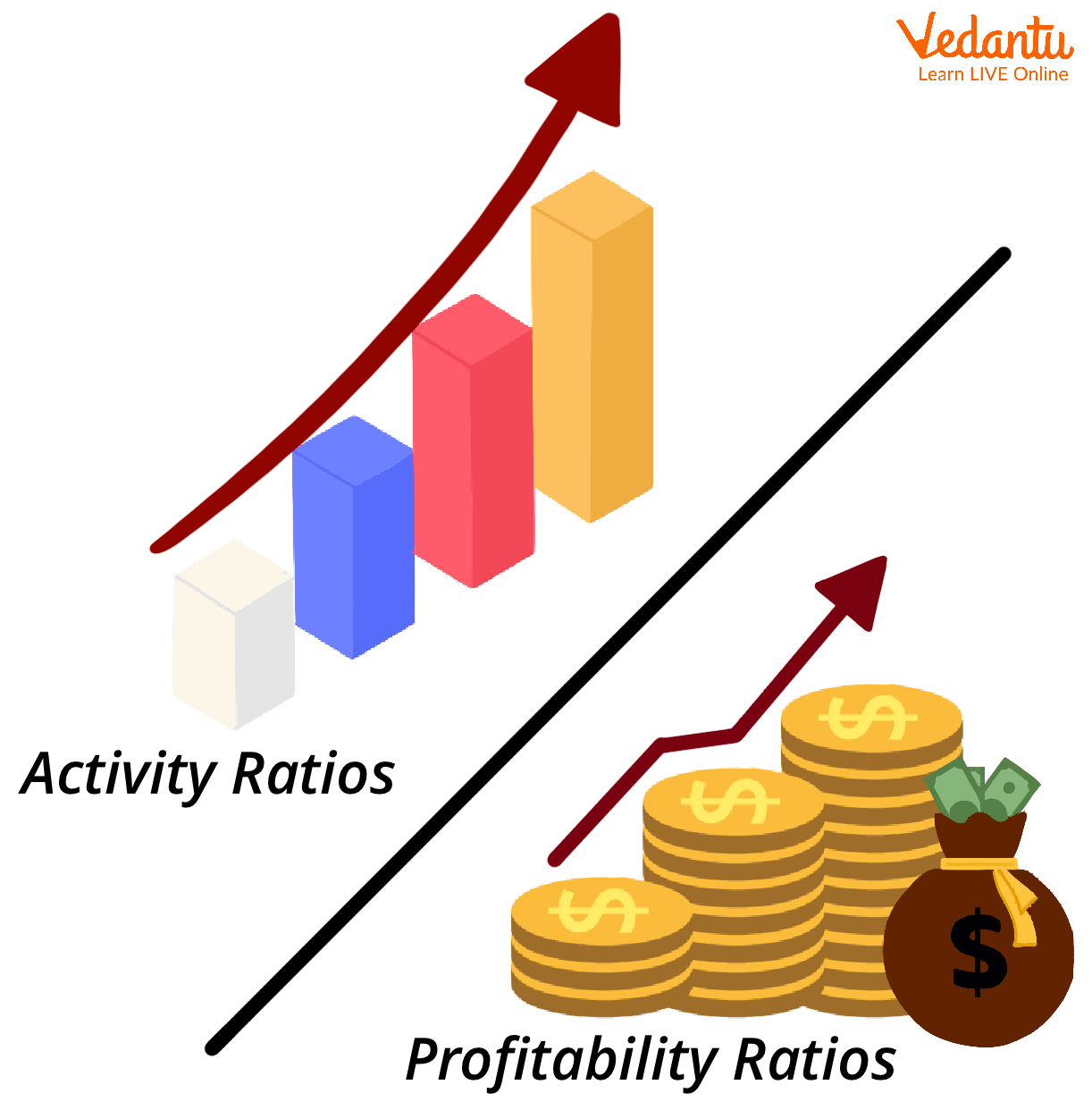




An Overview of Activity and Profitability Ratios
Using financial ratios, one financial number is expressed concerning another. Financial ratios may help with forecasting, stock selection, firm valuation, and security valuation.
Financial ratios may be categorised using different criteria. Although the titles of these categories and the measures each contains might differ greatly, activity, liquidity, solvency, profitability, and valuation ratios are often used. Every type evaluates a separate element of a business. All areas are crucial to assess a company's total capacity to produce cash flows from its business activities.
Asset utilisation ratios and operating efficiency ratios are other names for activity ratios. They assess how successfully a business manages its many assets and other day-to-day operations. These ratios often incorporate data from the balance sheet and income statement in the numerator and denominator.

Activity & Profitability Ratios
What is an Activity Ratio?
A financial indicator called an activity ratio shows how effectively a firm uses the assets on its balance sheet to produce revenue and cash. Analysts, also known as efficiency ratios, use activity ratios to assess a company's inventory management practices, which are crucial to its operational flexibility and overall financial health.
Any form of financial indicator that aids investors and research analysts in determining how effectively a firm uses its assets to create sales and cash is called an activity ratio.
Activity ratios can be used to compare two companies operating in the same industry or to track the financial health of a single organisation over time.
Activity ratios can be further broken down into assessments of return on equity, total asset turnover, inventory turnover and various other indicators.

Activity Ratio
Activity Ratios
Activity ratios are beneficial when used to compare two firms that are competitors in the same industry to see how one company compares to its rivals. Activity ratios, however, may also be used to monitor a company's financial performance across several recording periods and identify changes over time. These figures may be plotted to show a potential performance picture for a corporation.
The Following Subcategories of Activity Ratios Exist:
1. Accounts Receivable Turnover Ratio - An organisation's capacity to collect money from its clients is determined by its accounts receivable turnover ratio. The average statements receivable amount is multiplied by the total credit sales during a specific time. A low ratio indicates a problem with the collecting procedure.
2. The Merchandise Inventory Turnover Ratio - The turnover ratio for goods inventories is a statistical indicator of how frequently new stock is purchased and sold within a specific time frame. The average inventory is subtracted from the cost of goods sold during a given time frame. The numbers should be high for a corporation to move its stock quickly.
3. The Total Asset Turnover ratio - The efficiency with which a company utilises its assets to make a sale is gauged by the total assets turnover ratio. To determine how well a firm uses its resources, total sales are divided by total assets. Smaller percentages could suggest that a business is having trouble moving its goods.
4. Income from Equity - The earnings generated from shareholder equity are measured by a performance indicator called return on equity (ROE). Net income is divided by the total number of outstanding stock shares in the market to arrive at ROE.

Activity Ratio
What are Profitability Ratios?
Profitability ratios are a group of financial measurements used to evaluate a company's profitability of its revenue, operational expenses, balance sheet assets, or shareholders' equity at a single moment in time. Efficiency ratios, which look at how well a firm utilises its resources to create revenue, may be contrasted with profitability ratios (as opposed to after-cost profits).
Which Types of Profitability Ratios Exist?
Companies may get valuable insight into their financial health and performance with the help of a variety of profitability statistics. Generally speaking, these proportions fall into two broad classes:
Margin Ratios: A company's capacity to turn revenues into profits is measured by margin ratios. All examples are examples of the margin of production, including gross margin, operating margin, net margin, cash flow margin, EBIT, EBITDA, EBITDAR, NOPAT, operating cost ratio, and overhead ratio.
Return Ratios: The return ratio measures the efficiency with which a corporation returns capital to its investors. Returns on assets, equity, cash, debt, retained profits, revenue, risk-adjusted return, invested capital, capital employed, and return on capital employed are all types of returns. (Total Revenue - Total Expenses) / Total Revenue.
Examples
One of the most common tools in the toolbox of a financial analyst is the profitability ratio, which can be broken down into two broad classes: margin ratios and return ratios. From several perspectives, margin ratios provide information about a business's capacity to convert sales into profits. Various methods assess a company's ability to create a profit for its shareholders by looking at its return ratios.
Profit margin, return on assets (ROA), and return on equity (ROE) are all examples of profitability ratios (ROE). Return on capital employed (ROCE) and return on invested capital (ROIC) are two others (ROCE).
Activity Ratios Vs. Profitability Ratios
Fundamental analytical methods like activity and profitability ratios assist investors in assessing many dimensions of a company's financial health. Efficiency ratios determine how well a corporation uses its resources to produce profits, whereas a list of profitability ratios shows how much money a company makes. A list of Profitability ratios can assist analysts in comparing a firm's earnings to those of its competitors in the same industry and following the development of the same company across multiple reporting periods.

Activity Ratio vs Profitability Ratio
Conclusion
A business's run may be predicted by looking at its activity ratio, which gauges how rapidly assets can be converted into cash or sales. Departments of management and accounting can assess their effectiveness using a variety of activity ratios. Inventory turnover and total asset turnover are the two most common ratios. Analysing and comparing ratios with other companies in the sector is usually advised. Most businesses frequently aim for a more significant percentage or value since doing so typically indicates that the company is operating profitably and creating cash flow.
FAQs on Activity and Profitability Ratios Explained
1. What is the Debtor Turnover Ratio?
This ratio is a crucial business indication because it demonstrates how successfully a firm can offer credit to its clients while still being able to reclaim the amount owed within the payment term.
Because future payments for credit sales are referred to as accounts receivables, it is also known as the accounts receivable turnover ratio.
The debtor Turnover Ratio is calculated using the following formula:
Credit Sales / Average Debtors is the debtor turnover rate.
A more excellent ratio reveals a firm credit policy, while a lower ratio reveals a weak one for the organisation.
2. What is the importance of Activity Ratios?
Activity ratios are crucial gauges of a company's operational effectiveness. Additionally, it demonstrates how a firm generates money and uses the balance sheet components to manage its operations.
The Activity Ratios were the main focus of this. Students will benefit greatly from the idea offered in this article to gain a solid knowledge of Activity or Turnover Ratios. A more excellent ratio reveals a firm credit policy, while a lower ratio reveals a weak one for the organisation.
3. What is the Working Capital Turnover Ratio?
This ratio helps assess how well a business can use its working capital to generate sales of its items.
Calculating the working capital turnover ratio uses the following formula:
Sales or Costs of Goods Sold / Working Capital is the operating capital turnover ratio.
A more significant amount of working capital indicates that a firm effectively uses its working capital. In contrast, above a ratio of two, a higher ratio is not always better, although this is not always the case.





















